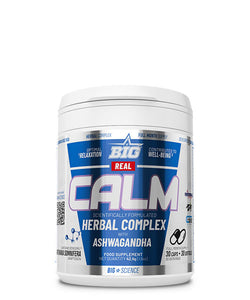
Keep Calm and Take Lavender
Sergio Guerrero
INTRODUCTION
In this new blog post we will talk about Lavender, a substance that is present in BIG's Real Calm product.
Lavender ( Lavandula angustifolia) is an herb native to North Africa and the mountainous regions of the Mediterranean. Lavender is also cultivated for the production of its essential oil, which comes from the distillation of the flower spikes of certain species of lavender. Its oil has cosmetic uses and is believed to have some medicinal uses. Lavender essential oil , unlike the plant form, is toxic when ingested .
Some research suggests that lavender oil has antiseptic and anti-inflammatory properties, which may help heal minor burns and insect bites. Additionally, and where we are especially interested , is that the use of Lavender can be useful to treat anxiety, insomnia, depression and restlessness.
Some studies show that consuming lavender as a tea can help with digestive problems such as vomiting, nausea, intestinal gas, upset stomach, and abdominal bloating.
There is also some evidence where it can help with digestive problems, relieve headaches, sprains, toothaches and sores. It can also be used to prevent hair loss, although we will focus especially on the use for which it has been formulated in the BIG Science range, anxiety, insomnia and depression.
MECHANISM OF ACTION
In general, lavender is chemically composed of more than 100 components, including terpenes such as linalool, limonene, triterpenes, linalyl acetate, alcohols such as perillyl alcohol, ketones such as camphor, polyphenols such as tannins, but also coumarins, cineol and flavonoids, in different percentages (Basch et al., 2004).
The key components of Lavandula angustifolia , which is the most widely used lavender species , are linalyl acetate and linalool, and, although linalyl acetate has the largest proportion, linalool is considered the main active constituent . However, both components are responsible for lavender's pharmacological effects, including its supposed calming and sedative activity.
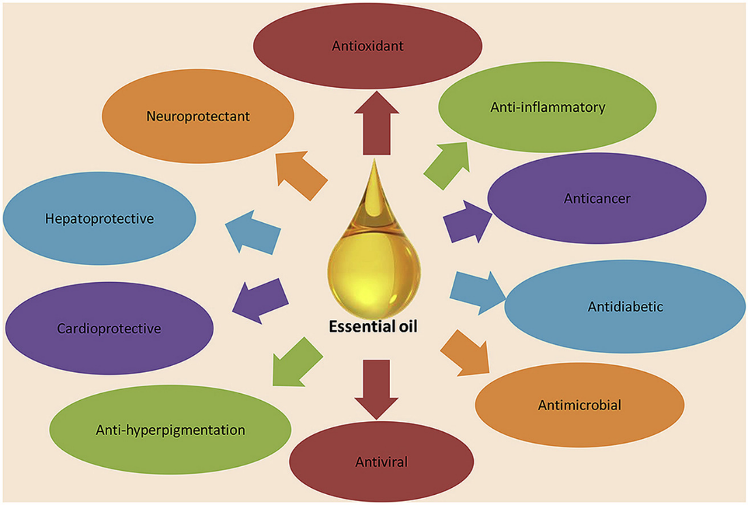
- Figure 1: Uses and pharmacological properties of Lavender Essential Oil.
Studies on the molecular mechanisms of the pharmacological effects of lavender essential oil revealed that its effect on the CNS could be attributed to the inhibition of voltage-gated calcium channels , this leads to an attenuation of the situationally inappropriate and excessive stress response. of the central nervous system. Unlike other monoterpenes found in lavender essential oil , linalool and linalyl acetate significantly inhibited voltage-gated calcium channels (VDCC), showing similarities to the drug pregabalin (Fig 3.)
In another study, it was shown that lavender essential oil has an affinity for the NMDA receptor, which may contribute to the anxiolytic and calming effect and SERT, a receptor responsible for the reuptake of serotonin. Binding to the NMDA receptor (Fig. 2) was also observed for the major components of lavender essential oil, linalyl acetate and linalool, while only linalool demonstrated significant binding to SERT .

- Figure 2: Affinity of lavender essential oil (A) and linalool and linalyl acetate (B) for the NMDA glutamate receptor.
Other results from the double-blind, placebo-controlled, randomized, clinical, crossover study in healthy men using positron emission tomography technology suggested that the anxiolytic effect of lavender essential oil (administered as silexan) could be attributed to changes in the serotonergic system , particularly at the level of the 5-HT 1st receptor, which can lead to an increase in extracellular serotonin levels. Remember that serotonin, along with dopamine, are one of the keys used in treatments for anxiety, depression, etc.

- Figure 3: Inhibition of voltage-gated calcium channels using lavender essential oil. Track A
DOSAGE AND SIDE EFFECTS
Lavender essential oil is traditionally used and approved by the European Medicines Agency (EMA) as a herbal medicine to relieve stress and anxiety . The medication in question is marketed under the name Lasea© and whose patent is Silexan.
Silexan is lavender oil standardized to 36.8% linalool and 34.2% linalyl acetate, in addition to the presence of other components of lavender essential oil present in significant quantities are the monoterpene alcohol lavandulol, its acetate ester. of lavandulil and the bicyclic monoterpenoids borneol, eucalyptus oil and camphor.
Among psychiatric disorders, anxiety disorders are more common than others. Anxiety disorders have a huge economic impact on society that mainly affects the working-age population. Anxiety often manifests as a symptom of other psychiatric disorders and also frequently precedes their onset. Anxiety disorders are also more comorbid than other mental disorders. Their high comorbidity extended to other psychiatric disorders as well as physical illnesses.
Due to the chronic nature of anxiety disorders, patients suffer from them for a long time, sometimes decades. However, therapeutic interventions, such as pharmacotherapy and psychotherapy and their combination, are often beneficial and improve the patient's quality of life, often resulting in complete recovery.

- Figure 4: Factors that contribute to the pathophysiology of depression.
In a recent review of placebo-controlled randomized controlled trials published in 2022 by Bartova, L et al., whose purpose was to investigate the effectiveness of silexan against the most recurrent depressive symptoms, a meta-analysis of the five placebo-controlled clinical trials was presented. placebo tests performed so far with silexan in subthreshold anxiety and anxiety disorders.
Patients in all trials received silexan at a dose of one 80 mg/day capsule or placebo for 10 weeks according to random assignment. Assessment of antidepressant effect was based on the item “depressed mood” of the Hamilton Anxiety Rating Scale (HAMA) administered in all trials and on the total scores of the Montgomery Åsberg Depression Rating Scale (MADRS). ) or the Hamilton Depression Rating Scale (HAMD) used in three trials. After 10 weeks of treatment, patients receiving silexan showed a significantly more pronounced score reduction for the HAMA item "depressed mood" than those in the placebo group. Silexan-treated patients with more severe depressive symptoms at baseline showed more pronounced improvements than those with milder symptoms.
Another type of dose is suggested by Siegfried, K and colleagues in 2017, where it was observed that individualization in the administration of lavender essential oil is key . In two double-blind, placebo-controlled trials, daily doses of 10, 40, 80 and 160 mg of silexan were administered for 10 weeks. A total of 925 adults with Generalized Anxiety Disorder (GAD) were assessed for change from baseline for the HAMA and Covi Anxiety Scale, the Clinical Global Impressions Scale, the Sheehan Disability Scale, and the Mental Health Questionnaire. SF-36 health using analysis of variance and covariance. Silexan 160 mg/day was superior to placebo in all efficacy outcomes investigated, with response rates greater than 60% according to HAMA and Clinical Global Impressions criteria . For the 80 mg/day dose, superiority over placebo could be demonstrated in one trial as well as in the pooled analysis. The risk of adverse events with silexan was similar to that of placebo for all doses investigated. In Generalized Anxiety Disorders, one silexan capsule at a dose of 160 mg/day is effective, while 80 mg/day may represent the lower end of the therapeutic range . Daily doses up to 160 mg were well tolerated.
Without a doubt one of the studies that attracted the most attention was that of Woelk, H and Schläfke, S in 2010, where the effectiveness of standardized lavender essential oil or silexan was compared against the drug Lorazepam , to treat Generalized Anxiety Disorder.
In the study, the effectiveness of a 6-week intake of silexan compared to Lorazepam in adults with GAD was investigated. The primary objective variable was the change in the Hamilton Anxiety Rating Scale (HAM-A total score) as an objective measure of anxiety severity between baseline and week 6. Results demonstrated that silexan improved effective way generalized anxiety comparable to a common benzodiazepine , in this case, Lorazepam. Furthermore, standardized lavender oil or silexan did not show sedative effects in our study and has no potential for abuse , and, therefore, it was concluded that standardized lavender essential oil or silexan appears to be an effective and well-tolerated alternative to benzodiazepines to improve generalized anxiety. Therefore, as we can see, the doses to be used are 80 to 160 mg of silexan or standardized lavender essential oil.

- Figure 5: Efficacy and safety of lavender essential oil capsules (Silexan) among patients suffering from anxiety disorders
As for risks, standardized lavender essential oil or silexan has no hypnotic or sedative side effects and appears to lack potential for abuse . Regarding its specific antidepressant properties, standardized lavender essential oil or silexan improves several aspects of neuroplasticity, which appears to be the final common pathway of all antidepressant drugs .
Among the adverse events attributable to the use of lavender or silexan oil we mainly find gastrointestinal problems such as nausea, belching or bad breath and diarrhea. Several patients also reported having headaches in the 2015 study by Kasper et al.
The use of lavender essential oil is contraindicated for people suffering from gastritis, colitis, irritable colon, epilepsy, hepatopathologies, pregnant or lactating women.

- Figure 6: Randomized, double-blind, double-dummy, multicenter trial with four parallel groups receiving 160 mg silexan daily (121 patients), 80 mg silexan daily (135 patients), 20 mg paroxetine daily and placebo with 26.4% male in the sample size of 616 participants.
REFERENCES
- Sharmeen Jugreet, Shanoo Suroowan, RR Kannan Rengasamy, M. Fawzi Mahomoodally, Chemistry, bioactivities, mode of action and industrial applications of essential oils, Trends in Food Science & Technology, Volume 101, 2020, Pages 89-105, ISSN 0924-2244 , https://doi.org/10.1016/j.tifs.2020.04.025 . ( https://www.sciencedirect.com/science/article/pii/S0924224420304544 )
- Bartova L, Dold M, Volz HP, Seifritz E, Möller HJ, Kasper S. Beneficial effects of Silexan on co-occurring depressive symptoms in patients with subthreshold anxiety and anxiety disorders: randomized, placebo-controlled trials revisited. Eur Arch Psychiatry Clin Neurosci. 2022 Mar 9. doi: 10.1007/s00406-022-01390-z. Epub ahead of print. PMID: 35262795.
- Davide Donelli, Michele Antonelli, Caterina Bellinazzi, Gian Franco Gensini, Fabio Firenzuoli, Effects of lavender on anxiety: A systematic review and meta-analysis, Phytomedicine, Volume 65,2019,153099, ISSN 0944-7113, https://doi. org/10.1016/j.phymed.2019.153099 ( https://www.sciencedirect.com/science/article/pii/S0944711319303411 )
- Basch, I. Foppa, R. Liebowitz, J. Nelson, M. Smith, D. Sollars, C. Ulbricht. Lavender (Lavandula angustifolia Miller), J. Herb. Pharmacother, 4 (2004), pp. 63-78
- Fung TKH, Lau BWM, Ngai SPC, Tsang HWH. Therapeutic Effect and Mechanisms of Essential Oils in Mood Disorders: Interaction between the Nervous and Respiratory Systems. International Journal of Molecular Sciences. 2021; 22(9):4844. https://doi.org/10.3390/ijms22094844
- Heghes SC, Vostinaru O, Rus LM, Mogosan C, Iuga CA, Filip L. Antispasmodic Effect of Essential Oils and Their Constituents: A Review. Molecules. 2019; 24(9):1675. https://doi.org/10.3390/molecules24091675
- Kasper S, Möller HJ, Volz HP, Schläfke S, Dienel A. Silexan in generalized anxiety disorder: investigation of the therapeutic dosage range in a pooled data set. Int Clin Psychopharmacol. 2017 jul;32(4):195-204. doi: 10.1097/YIC.0000000000000176. PMID: 28379882.
- Kasper S, Müller WE, Volz HP, Möller HJ, Koch E, Dienel A. Silexan in anxiety disorders: Clinical data and pharmacological background. World J Biol Psychiatry. 2018 Sep;19(6):412-420. doi: 10.1080/15622975.2017.1331046. Epub 2017 Jun 19. PMID: 28511598.
- Kasper, S. et al. Lavender oil preparation Silexan is effective in generalized anxiety disorder–a randomized, double-blind comparison to placebo and paroxetine. International Journal of Neuropsychopharmacology 17, 859–869 (2014).
- López V, Nielsen B, Solas M, Ramírez MJ, Jäger AK. Exploring Pharmacological Mechanisms of Lavender ( Lavandula angustifolia ) Essential Oil on Central Nervous System Targets. Front Pharmacol. 2017 May 19;8:280. doi: 10.3389/fphar.2017.00280. PMID: 28579958; PMCID: PMC5437114.
- Pérez Esparza, Rodrigo. Pharmacological treatment of depression: current events and future directions. Fac. Med. (Méx.) [online]. 2017, vol.60, n.5, pp.7-16. ISSN 2448-4865.
- von Känel R, Kasper S, Bondolfi G, Holsboer-Trachsler E, Hättenschwiler J, Hatzinger M, Imboden C, Heitlinger E, Seifritz E. Therapeutic effects of Silexan on somatic symptoms and physical health in patients with anxiety disorders: A meta-analysis . Brain Behav. 2021 Apr;11(4):e01997. doi: 10.1002/brb3.1997. Epub 2021 Feb 27. PMID: 33638614; PMCID: PMC8035468.
- Walter E. Müller, Giacomo Sillani, Anita Schuwald, Kristina Friedland, Pharmacological basis of the anxiolytic and antidepressant properties of Silexan®, an essential oil from the flowers of lavender, Neurochemistry International, Volume 143, 2021, 104899, ISSN 0197-0186, https://doi.org/10.1016/j.neuint.2020.104899 . ( https://www.sciencedirect.com/science/article/pii/S0197018620302904 )
- Woelk H, Schläfke S. A multi-center, double-blind, randomized study of the Lavender oil preparation Silexan in comparison to Lorazepam for generalized anxiety disorder. Phytomedicine. 2010 Feb;17(2):94-9. doi: 10.1016/j.phymed.2009.10.006. Epub 2009 Dec 3. PMID: 19962288.
- Yap, WS, Dolzhenko, AV, Jalal, Z. et al. Efficacy and safety of lavender essential oil (Silexan) capsules among patients suffering from anxiety disorders: A network meta-analysis. Sci Rep 9, 18042 (2019). https://doi.org/10.1038/s41598-019-54529-9




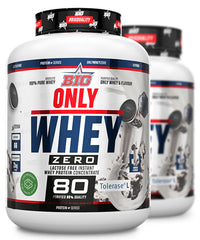
![CREABIG [Creapure®]](http://bigsupps.site/cdn/shop/products/producto_BIG_creabig_creapure_250g_0noflavour_500x600_8c48a126-a2a2-46a5-9bbd-8763ab82d768_200x.jpg?v=1757315967)

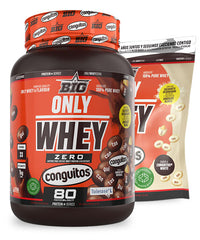

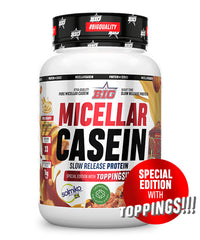
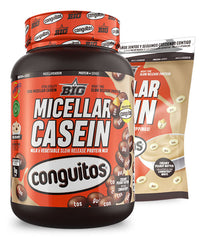
![CFM ISO ZERO [saco]](http://bigsupps.site/cdn/shop/files/producto_cfm_doypack_0noflavour_500x600a_200x.jpg?v=1750981452)
![CLEAR ISO ZERO [750g]](http://bigsupps.site/cdn/shop/files/producto_BIG_clearprotein_icepop_0noflavour_500x600a_200x.jpg?v=1757074297)
![CREABIG FIESTA® KOJAK® flavor - [250g]](http://bigsupps.site/cdn/shop/files/producto_BIG_creabig_kojak_0noflavour_500x600a_200x.jpg?v=1763548822)
